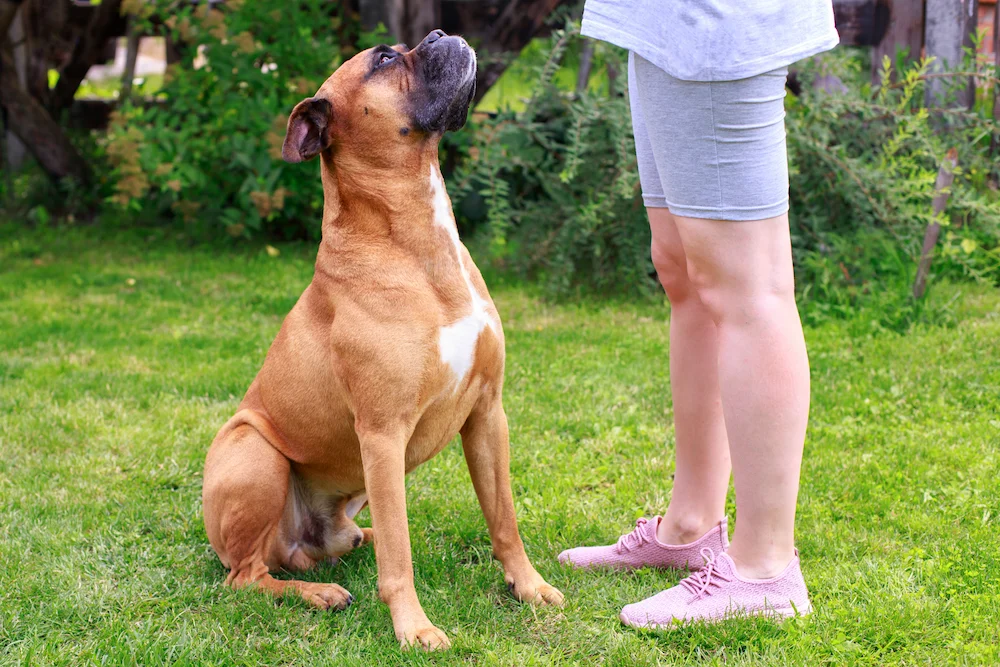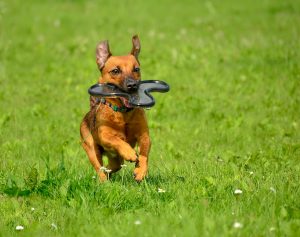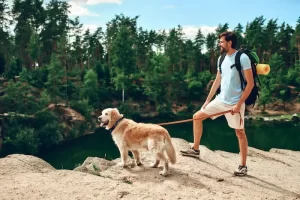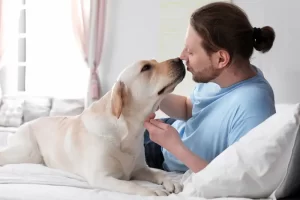
Teaching your dog to sit is one of the most basic training commands. You might even want to start your dog’s training on the critical sitting position as early as 8 weeks old. After sit teaching, your pup will stay put when you give the sit command, with its rear end on the floor until you give the command to move.
In this guide, we provide step-by-step instructions on how to teach a dog to sit. We also explain why the sit command provides such an important foundation for your future training sessions and even helps keep your dog safe.
Importance of Teaching Your Dog to Sit
Teaching your dog to sit on command provides the foundation of good manners. A well-trained pup will take the sitting position and stay put as soon as you give the hand signal or verbal cue. You’ll be able to take your dog out in public and have guests over to your home without worrying that your pet will jump up on someone or approach other dogs.
Your dog’s ability to sit can also keep it safe. Many dogs occasionally get out of the house or yard. If your pet knows to sit and wait when you give the command, you can prevent a dangerous situation like it running into the path of a car or bike.
When you teach your dog to sit, you’ll have the foundation for successful training in place. Sitting naturally leads to commands and tricks like stay, shake paw, lie down and roll over. You’ll be able to apply the easy steps and strategies below to train puppies and older dogs alike.
6-Step Guide to the Sit Command

Start Training Sessions With a Treat
Pick one of your puppy’s favorite treats when teaching it to take the sitting position. Stand in front of your dog when it’s also in a standing position. Hold the treat in one hand and slowly move toward your dog until it notices the smell. Allow it to sniff at your hand, but don’t give up the treats just yet.
Bring the Treat to Your Dog’s Nose
Place the hand with the treat by your pup’s nose. Then, slowly raise your hand to about 3 inches above your dog’s head. It’ll naturally lift its nose to follow the treat and drop its rear end to the ground at the same time.
If that doesn’t seem to work, make sure you’re standing close enough to your dog. Take a step forward if necessary. You may want to leash your puppy while you train to keep it near.
Give Lots of Praise When Your Dog Sits
Recognize your dog by using a clicker when it gets the trick right (as soon as its rear hits the ground). Give it the treat immediately. You should also say “good boy” or “good girl” in a bright, friendly voice. The combination of treats, praise and pats helps your dog learn through positive reinforcement by providing a valuable reward.
Try the Sitting Position Again
Walk a few feet away and call your dog over. If you haven’t mastered the “come” command yet, you can also use a treat now to get your dog to come to you. Then, repeat the first three steps, offering a reward and lots of praise when your dog sits.
Remove the Treat/h4>
Each tasty treat encourages your dog to get into the sit position. Once your dog responds to the word “sit” each time you offer a treat, it’s time to remove this lure so your dog learns to follow the sit command even when you don’t encourage the action with food.
This time, raise your empty hand above the dog’s nose and give the reward from the other hand. The dog will learn that this gesture is the sit signal.
Give a Verbal Command
You can also add a verbal cue to sit as you continue practicing the sit position. If you stick to your dog training sessions, your pup will learn to sit when you give the command alone.
Tips for Successful Training Sessions
You can teach your dog to sit even if you’re brand-new to dog training. These smart tips can help you understand how dogs learn, keep your dog’s attention span throughout each practice session and expand beyond “sit” to teach your dog other commands:
- Choose a calm setting for your training session. A quiet room or fenced outdoor space works best for practice. Avoid busy areas with noises and distractions like other dogs.
- Keep each training session to about 15 or 20 minutes when you’re first teaching your dog to sit. End sessions on a positive note with a reward and lots of head pats. Puppies have an even shorter attention span, so plan your training sessions accordingly.
- Take a break if your dog seems bored, distracted, unable to focus or simply not in the mood for training. Teaching new commands should be fun for you and your dog.
- Pay attention to how animals learn. Positive reinforcement is an essential part of the process for dogs, which is why you need to use a favorite treat or toy as a lure during practice.
- Repeat the process frequently. Offer the lure 5 to 10 times in each training session before you remove the treats, and use praise as the reward when your puppy performs the desired behavior.
- Add new challenges as your pet gets the hang of sitting on command. For example, you can remove the leash or the clicker so your pet learns to sit with a hand signal or verbal cue alone.
Whether you’ve just welcomed a new puppy into your home or you want to teach an old dog some new tricks, you’ll find the training process strengthens the bond between you and your pet. However, the training process does not end with the “sit” command.
As your dog becomes more skilled, you can gradually introduce new challenges and expand its repertoire of commands. In addition, for added safety, you can use a GPS dog collar like the Halo Collar during future training sessions to keep track of your pet’s location and ensure that it stays within a safe distance. Ultimately, consistent training and positive reinforcement will lead to a stronger bond between you and your furry companion, as well as a well-behaved and safe dog.






